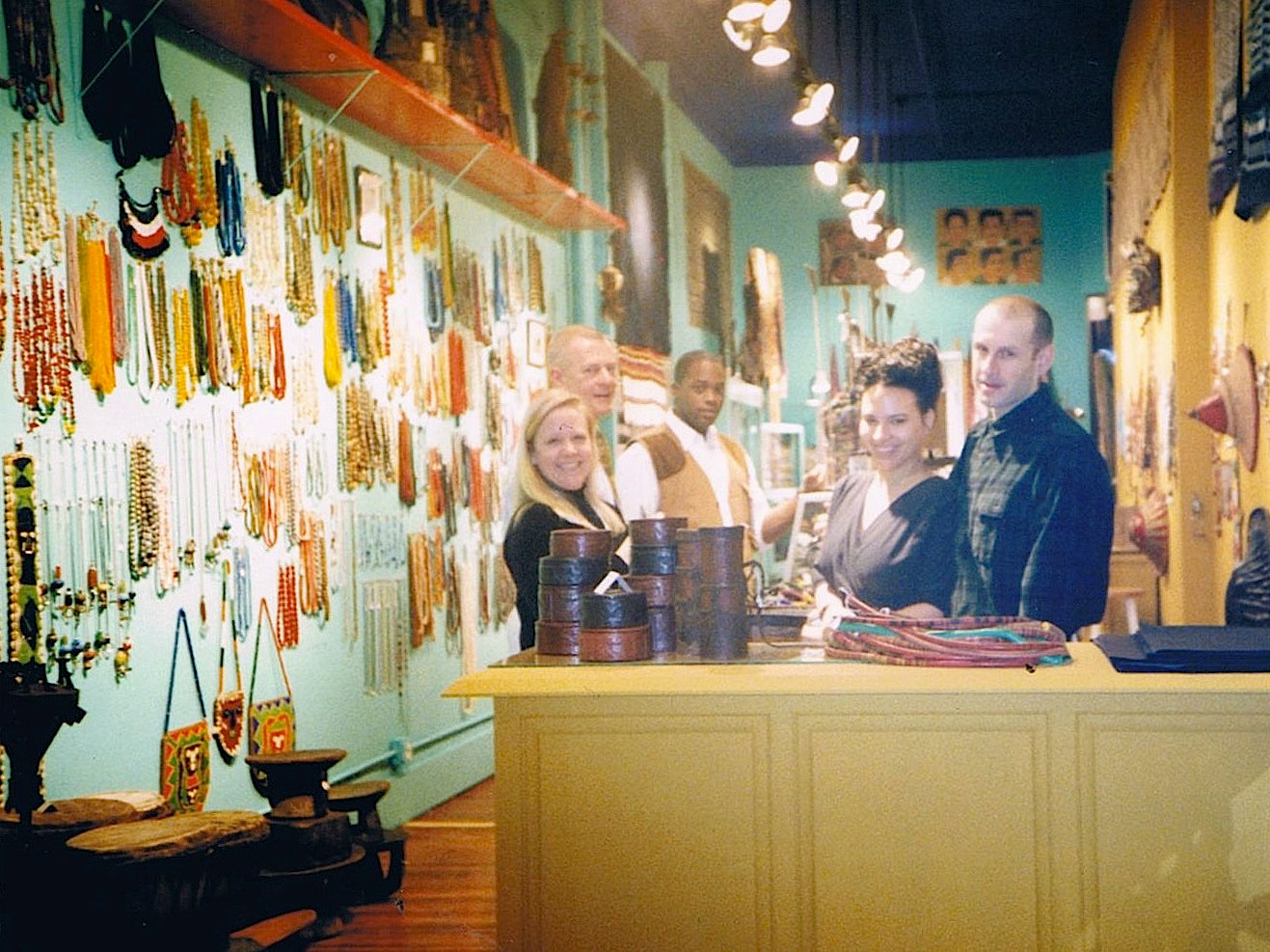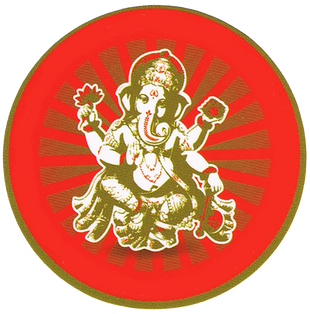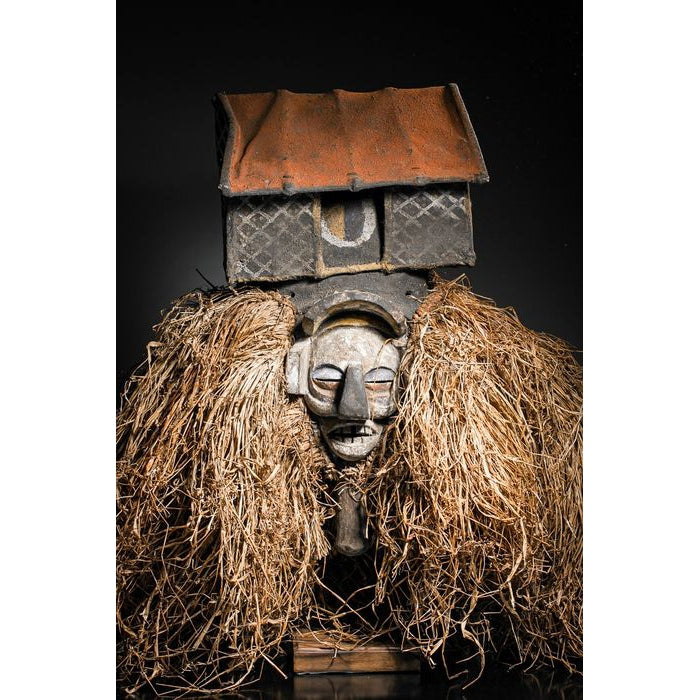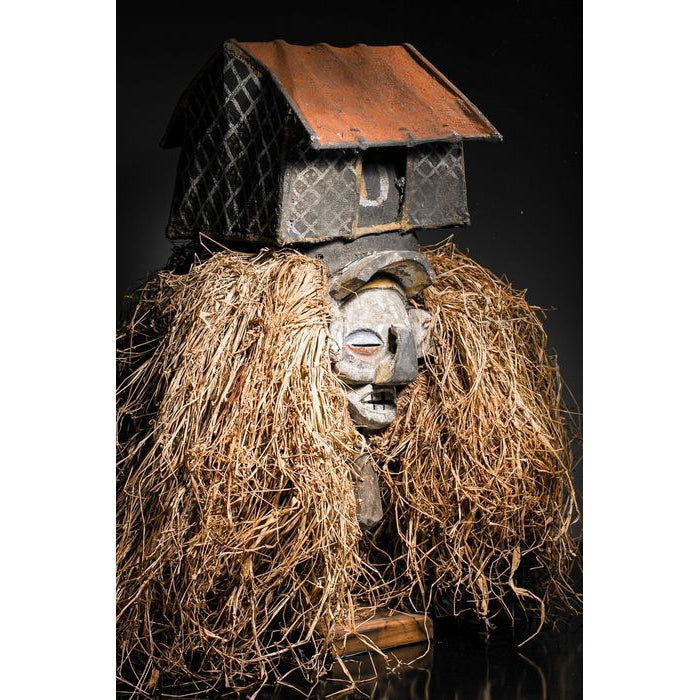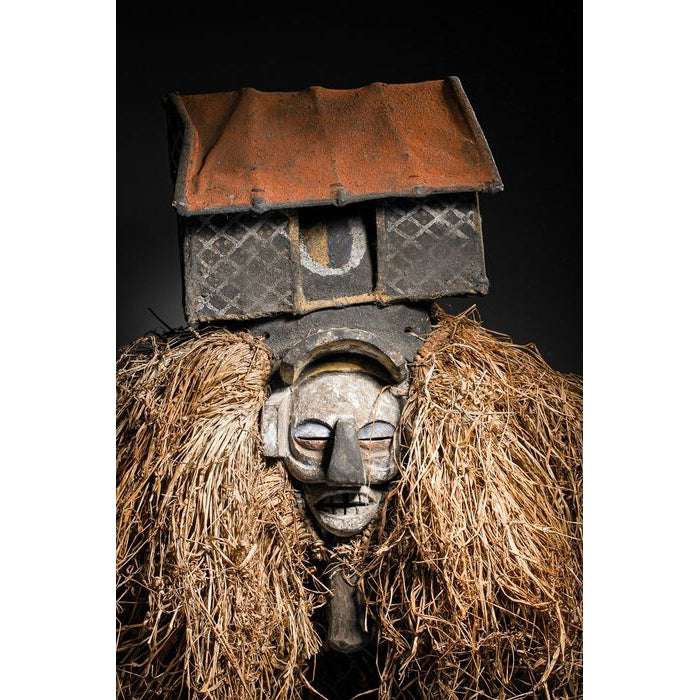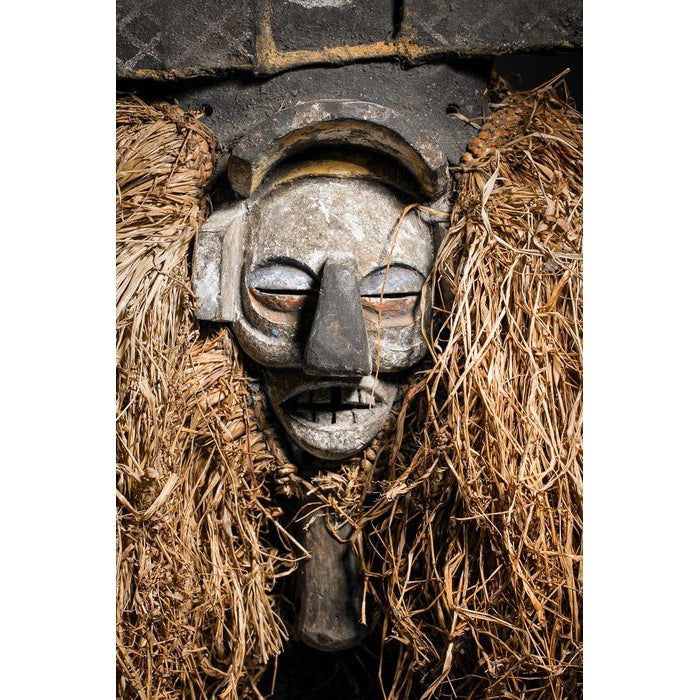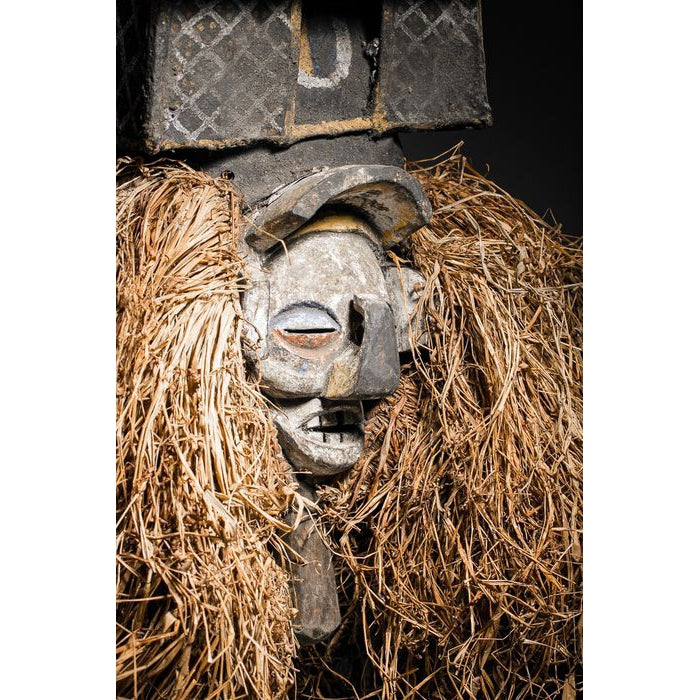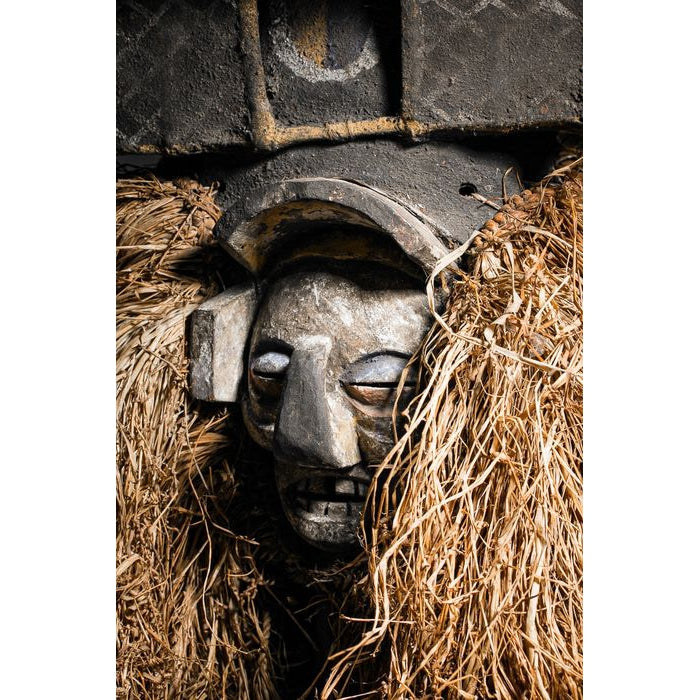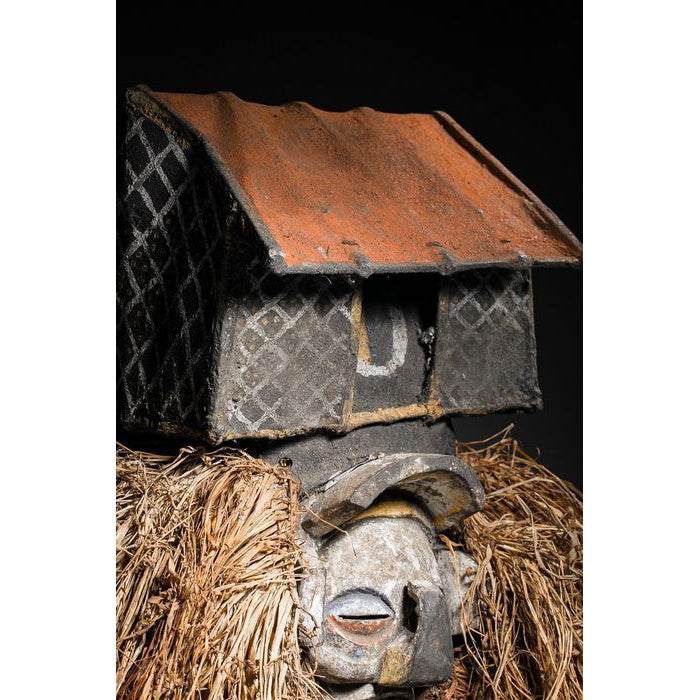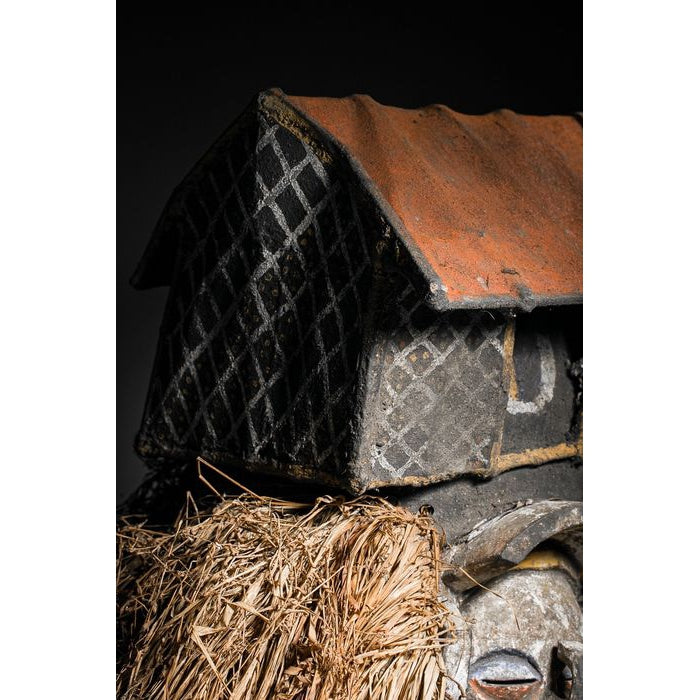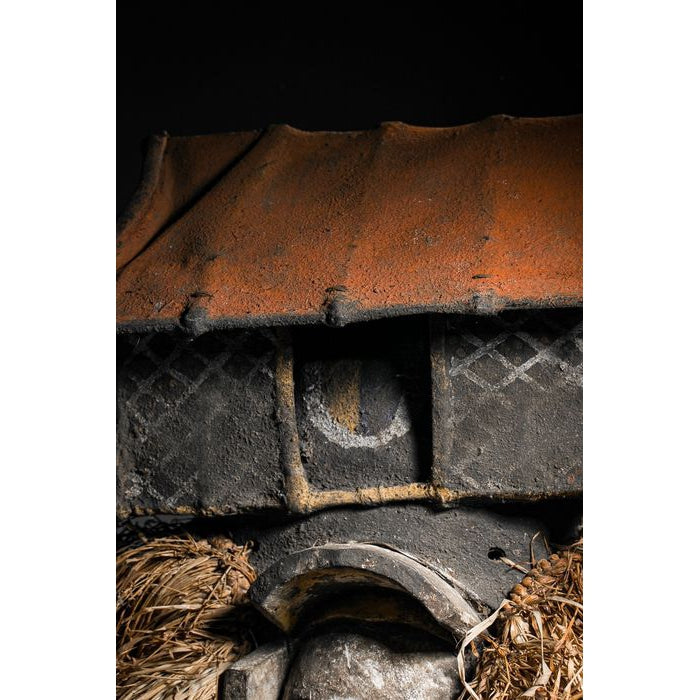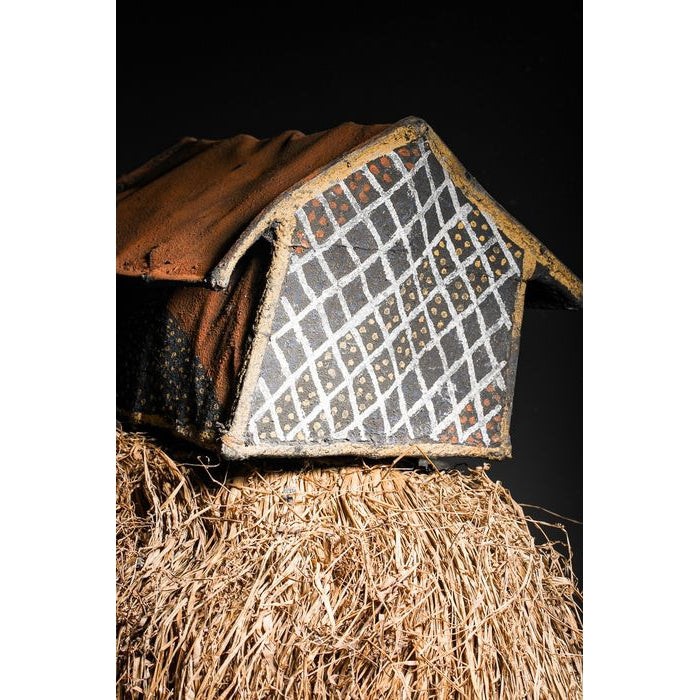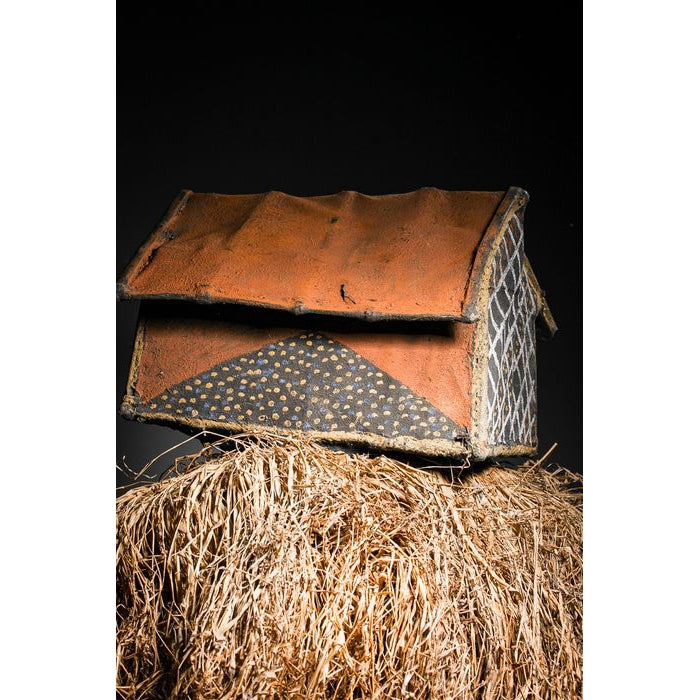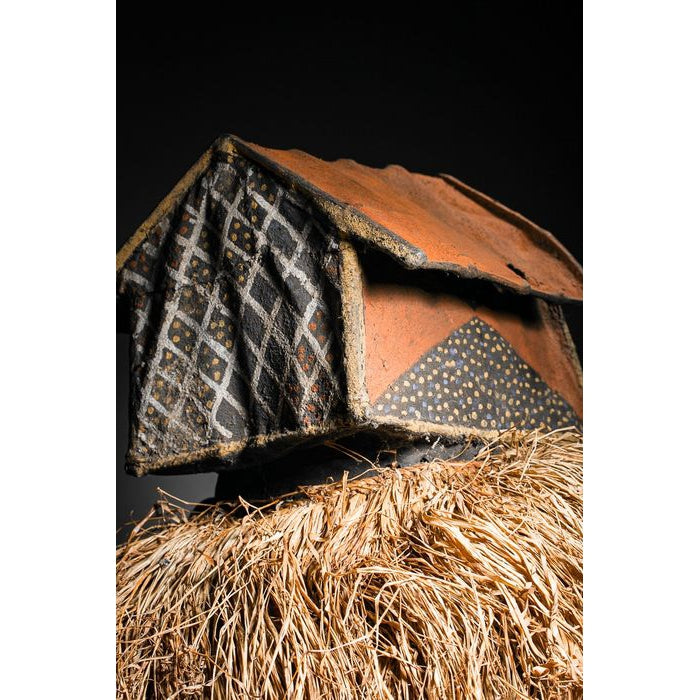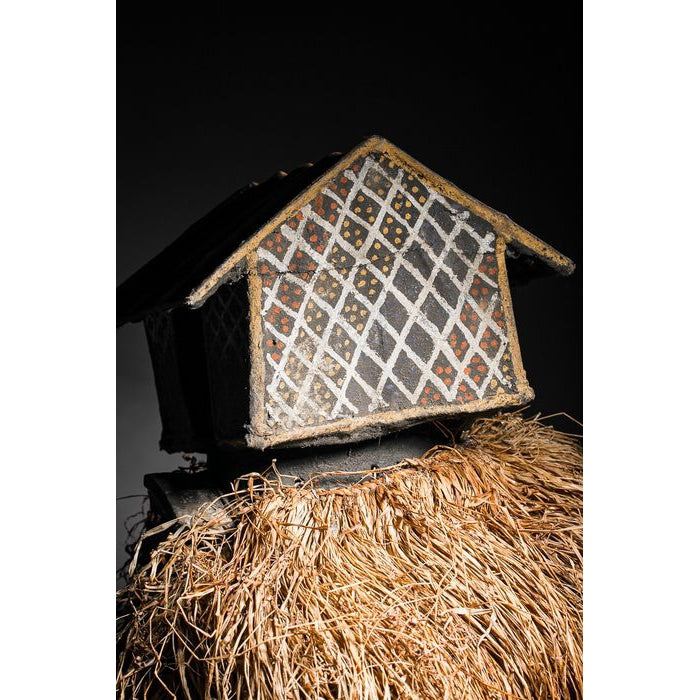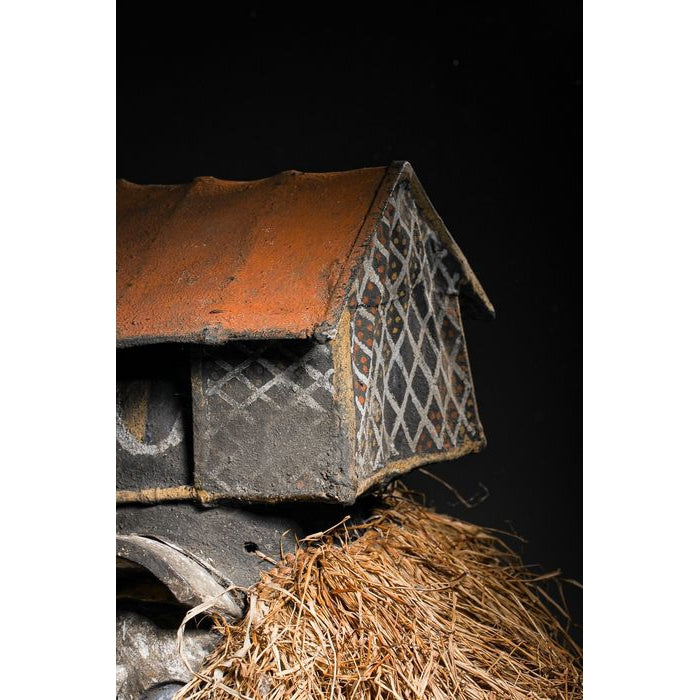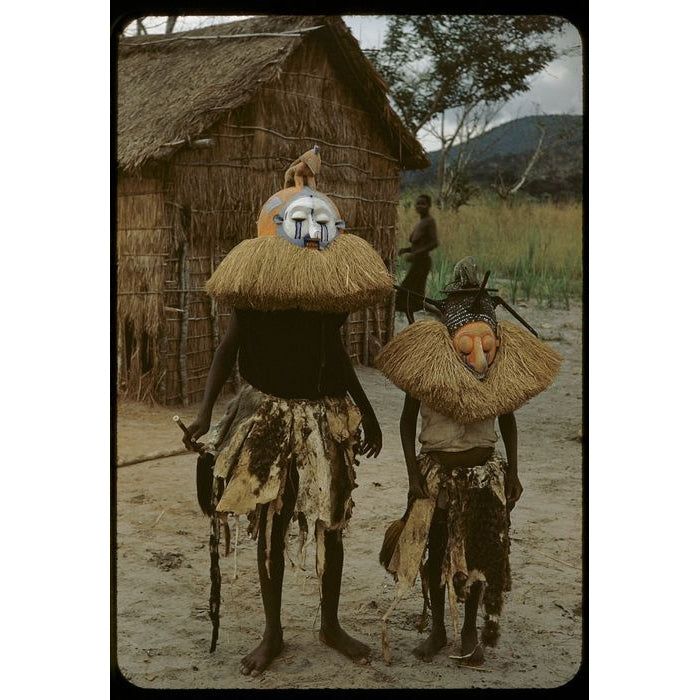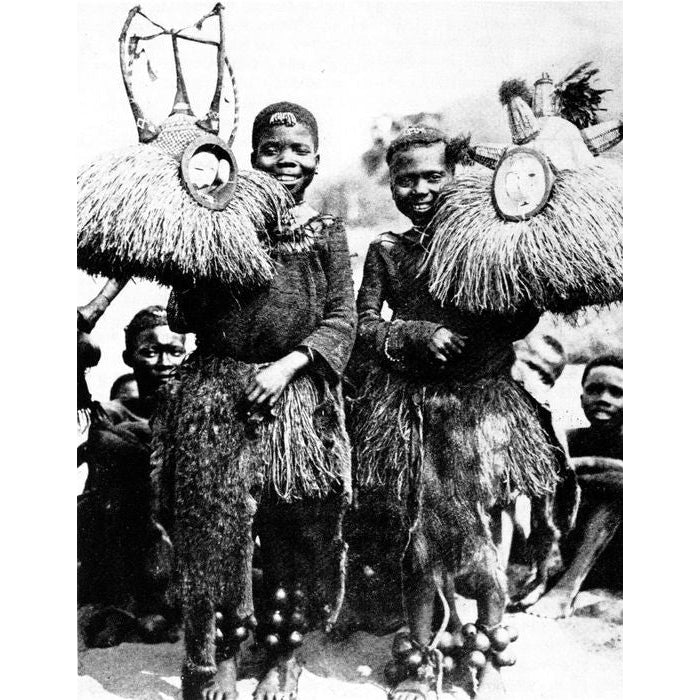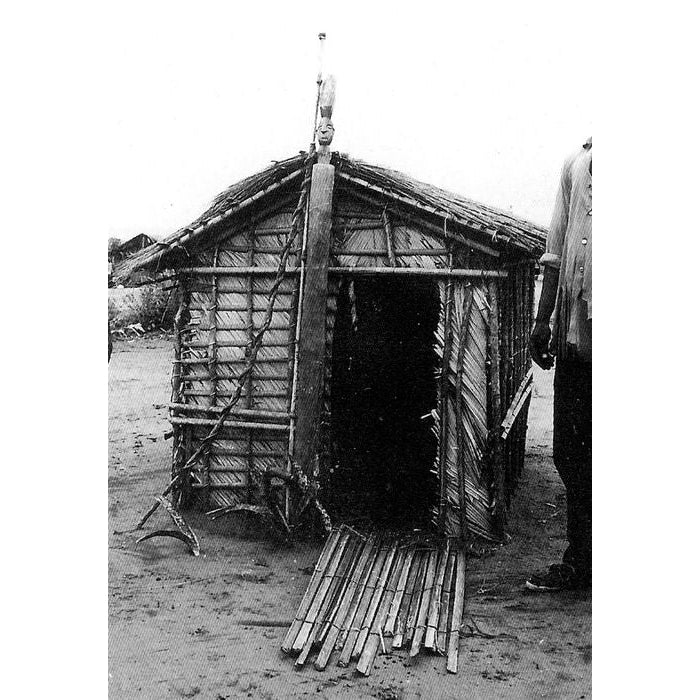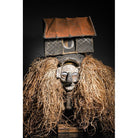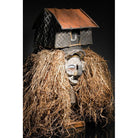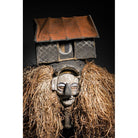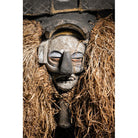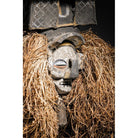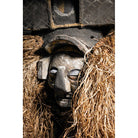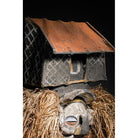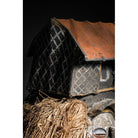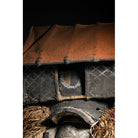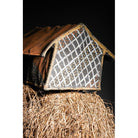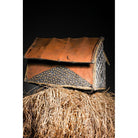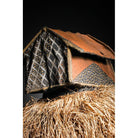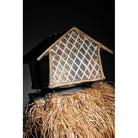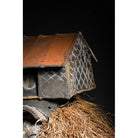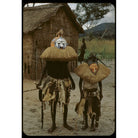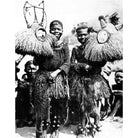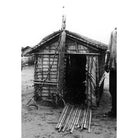Yaka Kholuka Initiation Mask, Democratic Republic of Congo
Pickup available at 16 East 17th Street
Usually ready in 24 hours
The Yaka people of Angola and the Democratic Republic of the Congo have a male initiation society known as Makunda or N’khanda, which is charged with circumcising, hazing, and teaching boys to become a man (mainly, education in hunting and sex). During the circumcision dance performances (kinkanda), the initiates wear special masks while their teachers alone are permitted to wear the ritual masks of the Makunda. After initiation, the boys are led out of seclusion and back into the community. Before festivities can begin, the head teacher (kahyuudi or kayudi) commissions a carver (nkalaweeni or mvumbwa) to create a series of masks. Many types of masks are worn or danced in succession during the final initiation feast:
Kambaandzya (a raffia cloth domed helmet mask with a brim bisecting it; the mask is covered in black resin and painted with geometric designs in red, white, blue, and yellow)
- Tsekedi (a leather or raffia cloth helmet mask with a white, human face and a series of horizontal discs on an inverted cone topping the helmet)
- Mweelu (a helmet made of braided raffia fiber with large numbers of feathers; birdlike eyes in wood, gourd or bamboo; and a hornbill beak for a mouth)
- Ndeemba (an abstract human face with bulging eyes carved of wood; many phallic rods come out of the helmet in all directions, including the inverted cone on the very top)
- Kholuka (a polychrome human face with bulging eyes, and an open mouth showing the teeth, carved of wood; horizontal discs on an inverted cone come from the top, with bird feathers, and polychrome figures of humans or animals)
The Kholuka, also known as a Mbaala, is worn either by the leader of the initiation or the senior initiate. It is the last danced, and it is danced alone to signal the end of the initiation ceremony. Unlike the other masked dances, which are entertaining to the audience, the kholuka creates a sense of unease due to the overtly sexual behavior of the dancer.
There are also masks not danced by initiates, known as Kakuungu. This mask is a large, long face mask with a distorted human-like face having bulbous chin, cheeks, and forehead. It is thought to represent an ancestor and is danced by the herbal shaman to stop bleeding after the circumcision. Similarly, the mbawa, a mouthless helmet mask of raffia cloth over an ovular structure of split cane, with horn s to symbolize the pakasa buffalo, is not danced by initiates.
For more on Yaka masquerade, see Arthur P. Bourgeois, Art of the Yaka and Suku (1984).
Pickup available at 16 East 17th Street
Usually ready in 24 hours
Pickup available, usually ready in 24 hours
16 East 17th Street
Ground Floor
New York NY 10003
United States
We truly love that you're making things, but unfortunately we do not buy things consignment or purchase outside work.
We have a reliable network of suppliers and are not currently in the position to purchase your collections. But we're thrilled that you thought of us.
Unfortunately no, we cannot create custom designs or sizes for our customers. However, you may be able to shorten them / decrease the width of the designs we offer slightly by manipulating the wires that connect the beads together.
A: It depends on a variety of factors. Get in touch with us to let us know what you're interested in learning, and we'll let you know if it's a possibility.
A: We do indeed sell at wholesale prices to those who meet our requirements. We have a general policy and a Wholesale Plus+ program for larger companies than would truly like to purchase in bulk. To learn about our wholesale policies, please see here.
A: Beads of Paradise does not, at anytime, give loans (pulls), secured or unsecured. We do however do rentals for stylists. Please see here for more info.
A: We love working with you when possible. Please send us a picture and or a description of what you're interested in and we'll be in touch.
It is our policy that NO Labor is done “on the spot”/”while you wait”. Any exceptions to this are at the discretion of the management and only at the discretion of the management. All items at Beads of Paradise are sold “As Is” with no warranty implied or expressed. If you have a problem with one of your purchases, please ask to see a manager. Thank you for your understanding.
For most pieces of jewelry on our site, we should be able to accommodate a request such as this, with some exceptions. You can purchase and leave a note when you purchase, or get in touch with us to inquire (please include a link to the product in question).
Beads Of Paradise began in the late 1980’s as a small store in the East Village. We originally specialized in African antiquities, textiles, beads and jewelry – but as interest in world art and beads grew throughout the 1990s, we underwent a major expansion and moved to our current location in the historic Flatiron district of New York City. Read More; A Visual History
